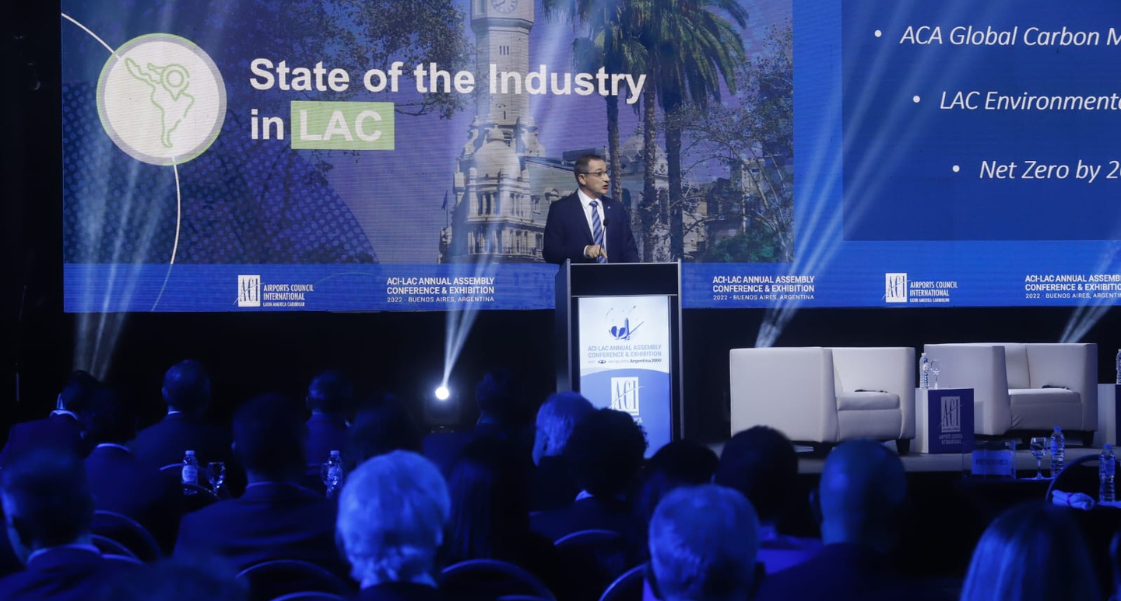Source: ACI-LAC
According to the latest airport movement data for Latin America and the Caribbean, ascertained by Airports Council International Latin America and the Caribbean (ACI-LAC) at the end of September, the region recorded 1.7% less air traffic in August 2022 than in the same period of 2019. Although the pre-pandemic figures have not yet been reached, this is the best performance of the region’s airports in this return of passengers to air travel.
“It is surprising the recovery that Latin America and the Caribbean has had so far,” celebrated Rafael Echevarne, director general of ACI-LAC, during the first day of the Annual Assembly of the Airports Council International of Latin America and the Caribbean | ACI-LAC 2022, which this year is being held in Buenos Aires, Argentina.
According to Echevarne, the Dominican Republic and Mexico were the countries that recovered the most, with increases of 17% and 11% over 2019.
“Countries that have never closed borders, such as Mexico, and that lifted restrictions long ago, have recovered air traffic more quickly. Now the trend is towards expansion, because since October 1 there are no longer restrictions on passenger entry in Latin American and Caribbean countries, i.e. there are no Covid-19 related reasons hindering travel in the region,” Echevarne added.
Argentina’s Minister of Transport, Alexis Guerrera, who was present at the opening of the conference, commented that since 2019, due to the country’s economic situation and then the pandemic, all works in the airport sector were impacted, but that investments have resumed this year, in airports across the country.
“It is a sign of the importance of connectivity for the development of regional economies and the importance that the Argentine government gives to the aeronautical industry and the development of tourism.”
The host of the event, Martín Eurnekian, CEO of Corporación América Aeropuertos and president of AA2000, informed that in 2022 and 2023, US0 million will be invested in the modernization of the airports operated by the company.
“The readjustment of terminals and safety in operations are the fundamental pillars that motivate our investments. And for the next five years we have projected investments of some US0 million,” he added.
Also present was Ezequiel Barrenechea, president of the Board of Directors of ACI-LAC and TAGSA, where he highlighted data from the Inter-American Development Bank (IDB) according to which the growth of the aviation sector in the Latin American and Caribbean region will generate the need for investments of USD 146 billion over the next 20 years.
“We still have many priority objectives to meet and we will only achieve them if we work together with all the actors in the sector, i.e. airports, airlines, governments, each with their representatives,” said Barrenechea.
Luis Felipe de Oliveira, director general of ACI Mundo, stressed that the industry is emerging from the pandemic with a variety of complex challenges and one of them is to recover workers who left the sector when there was a drop in travel volume. According to de Oliveira, “50% of aviation jobs were lost in the pandemic and one of the priorities today is to invest in finding skilled labor. We know that the industry will double in the next 20 years and we need new professionals who are attracted to our business.”
The Airports Council International Latin America and the Caribbean Annual Meeting and Conference is the region’s premier airport market event that brings together the industry’s top authorities and leaders and more than 300 aviation executives and experts. The first day of the 2022 edition highlighted discussions on sustainable tourism; airport regulation; the integration of advanced air mobility vehicles at airports; preparing the industry for a zero net carbon future; technologies that optimize airport operations; opportunities for electric aviation; and how social networks such as WhatsApp contribute to improving the passenger experience at the airport.
Towards a Net Zero Future in Aviation
During the panel “Preparing a zero emissions future”, Iván Saco, commercial director of Exolum, Laia Barbará, aviation decarbonization leader at the World Economic Forum, Agustin Elizondo – corporate
strategy and PMO manager and Nahuel Morandi, Technical Advisor of the National Airport System Regulator (ORSNA) discussed the solutions currently being tested at airports with the aim of reducing their direct emissions, the actions already underway for the development of aircraft powered by alternative fuel sources, such as electricity, hydrogen and SAF, and plans to adapt these aircraft to the airport’s operating environment. These include electric, hydrogen and SAF, and plans to adapt these aircraft to the airport’s operating environment.
Follow ACI-LAC news on Twitter at @ACI_LAC and Linkedin | #ACILAC2022

